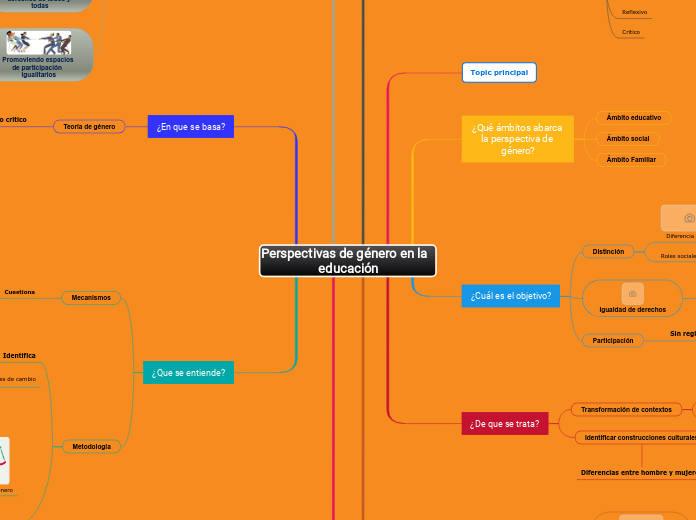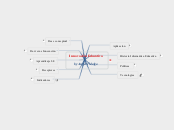¿Por que se aborda?
Mejora las condiciones de la mujer
Relaciones de poder
Escuela
Estructura Organizativa
Distribución de espacios diferenciados
Jerarquía de cursos
Elementos pedagógicos
Procesos de enseñanza
Currículo oculto
Relacion de estructuras mentales
Reproducen y fortalecen
Estereotipos
Conductas
INDEPENDIENTEMENTE
Orientación sexual
etnia
sexo
Raza
Perspectivas de género en la educación
The Solar System is the gravitationally bound system of the Sun and the objects that orbit it, either directly or indirectly. Of the objects that orbit the Sun directly, the largest are the eight planets, with the remainder being smaller objects, the dwarf planets, and small Solar System bodies.
¿Qué conceptos se deben reconocer?
Derechos humanos sexuales y reproductivos
Genero
Nuevas masculinidades
Roles de género
Diversidad sexual
sistema patriarcal
sexualidad
Feminismos
¿Que se entiende?
Uranus is an oddball. It has clouds made of hydrogen sulfide, the same chemical that makes rotten eggs smell so foul.
It rotates from east to west like Venus. Its tilt causes extreme seasons that last 20-plus years, and the sun beats down on one pole or the other for 84 Earth-years at a time.
Methane in the atmosphere gives Uranus its blue-green tint. It also has 13 sets of faint rings.
Metodología
A planet's day is the time it takes the planet to rotate or spin once on its axis.
Write down Uranus's day measured in Earth days.
Valora
Construcciones de cambio
Igualdad de género
Identifica
Mecanismos
How long does it take for Uranus to go around the sun?
Cuestiona
exlusion
La desigualdad
La discriminación
¿En que se basa?
Neptune is about the size of Uranus and is known for supersonic strong winds.
Neptune is far out and cold.
The planet is more than 30 times as far from the sun as Earth.
Neptune was the first planet predicted to exist by using math, before it was visually detected. Neptune is about 17 times as massive as Earth and has a rocky core.
Teoría de género
How long does it take for Neptune to go around the sun?
Paradigma teórico critico
Comprende
Conflictos Institucionales
Caras sociales
¿Cómo se puede transformar las desigualdades?
It was once considered a planet but in August 2006 the International Astronomical Union (IAU) downgraded the status of Pluto to that of “dwarf planet.”
Pluto is unlike other planets in many respects. It is smaller than Earth's moon; its orbit is highly elliptical.
It's a cold, rocky world with a tenuous atmosphere. Pluto is a very active ice world that's covered in glaciers, mountains of ice water, icy dunes, and possibly even cryovolcanoes that erupt icy lava made of water, methane or ammonia.
Promoviendo espacios de participación igualitarios
The dwarf planet Pluto has five moons.
Name these moons.
Promoviendo entornos de paz
Garantizando los derechos de todos y todas
A planet's day is the time it takes the planet to rotate or spin once on its axis.
Write down Pluto's day measured in Earth days.
Desarrollando competencias ciudadanas
Promoviendo un lenguaje Inclusivo
How long does it take for Pluto to go around the sun?
Haciendo evidente situaciones de desigualdad e injusticia
Rompiendo estereotipos de genero
Formando seres humanos autónomos y con pensamiento critico
Evolución de la perspectiva de género en la educación
Jupiter is a giant gas world that is the most massive planet in our solar system.
Its swirling clouds are colorful due to different types of trace gases.
And a major feature in its swirling clouds is the Great Red Spot, a giant storm more than 10,000 miles wide. It has raged at more than 400 mph for the last 150 years, at least.
Jupiter has a strong magnetic field, and with 75 moons, it looks a bit like a miniature solar system.
Pedagogías liberadoras
Jupiter has a strong magnetic field, and with 75 moons, it looks a bit like a miniature solar system.
Name the 4 most known moons.
Coeducación
How long does it take for Jupiter to go around the sun?
Educación multicultural
A planet's day is the time it takes the planet to rotate or spin once on its axis.
Write down Jupiter's day measured in Earth days.
Pedagogías feministas
¿De que se trata?
Mars is a cold, desert-like place covered in dust. This dust is made of iron oxides, giving the planet its iconic red hue.
Mars shares similarities with Earth: It is rocky, has mountains, valleys and canyons, and storm systems ranging from localized tornado-like dust devils to planet-engulfing dust storms.
Identificar construcciones culturales
How long does it take for Mars to go around the sun?
Diferencias entre hombre y mujeres
Transformación de contextos
A planet's day is the time it takes the planet to rotate or spin once on its axis.
Write down Mars's day measured in Earth days.
Inclusión
Equidad
¿Cuál es el objetivo?
Earth is a water world, with two-thirds of the planet covered by oceans.
It's the only world known to harbor life.
Earth's atmosphere is rich in nitrogen and oxygen.
Its name originates from 'Die Erde,' the German word for 'the ground.'
Earth may once have had two moons, nowadays it has just one.
Participación
How long does it take for Earth to go around the sun?
Sin reglas rígidas de género
Igualdad de derechos
A planet's day is the time it takes the planet to rotate or spin once on its axis.
Write down the Earth's day in hours.
Oportunidades
Mujeres
Hombres
Distinción
Roles sociales
Diferencia sexual
¿Qué ámbitos abarca la perspectiva de género?
Venus is Earth's twin in size and has no moons.
Its surface has various mountains and volcanoes. Because of its thick, toxic atmosphere that's made of sulfuric acid clouds, Venus is an extreme example of the greenhouse effect. The average temperature on Venus' surface is 900 F (465 C).
Venus spins slowly from east to west, the opposite direction to most of the other planets.
The Greeks believed Venus was two different objects — one in the morning sky and another in the evening. Because it is often brighter than any other object in the sky, Venus has generated many UFO reports.
Ámbito Familiar
How long does it take for Venus to go around the sun?
Ámbito social
A planet's day is the time it takes the planet to rotate or spin once on its axis.
Write down Venus's day measured in Earth days.
Ámbito educativo
Our Solar System has eight “official” planets which orbit the Sun.
Each planet is at a different distance from the sun. Name its position.
Topic principal
¿Por que se aborda la perspectiva de género en la educación?
Mercury is the smallest, only a little bit larger than Earth's moon. Mercury has no moon.
It experiences dramatic changes in its day and night temperatures: Day temperatures can reach a scorching 840 F (450 C), which is hot enough to melt lead. Meanwhile, on the night side, temperatures drop to minus 290 F (minus 180 C).
It also has a very thin atmosphere of oxygen, sodium, hydrogen, helium, and potassium and can't break-up incoming meteors, so its surface is pockmarked with craters, just like the moon.
Permite transformaciones
A planet's day is the time it takes the planet to rotate or spin once on its axis.
Write down Mercury's day measured in Earth days.
En torno a
Significados de orden cultural
Condiciones de desigualdad
Se ejecuta un rol
Critico
Reflexivo
formador









